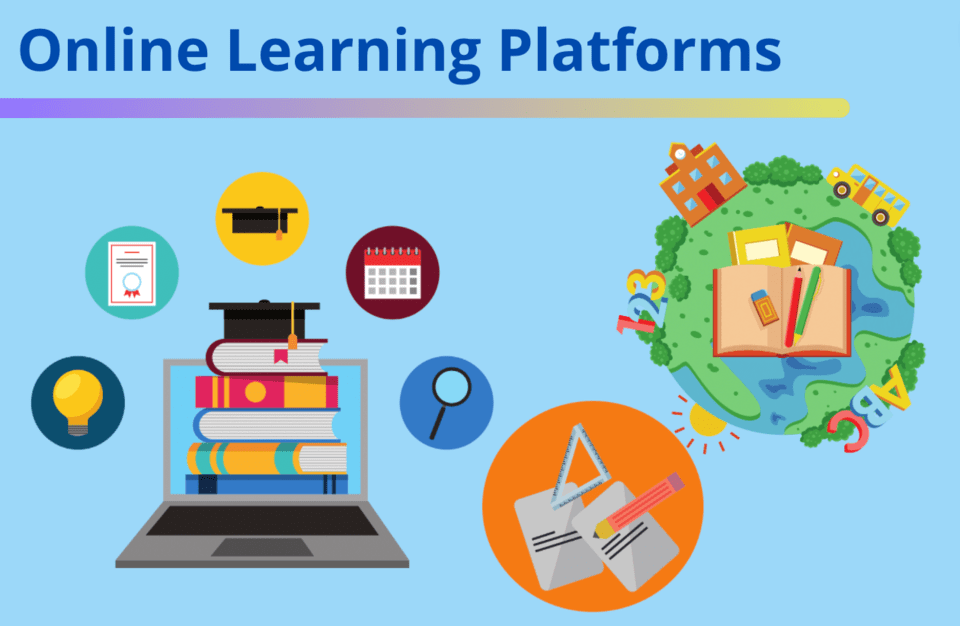Just How to Support Education and Study for Children and Kids with Modern technology
Just How to Support Education and Study for Children and Kids with Modern technology
Blog Article
The Function of E-Learning in Shaping the Future of Education And Learning for Kids
As standard education systems progress, the combination of e-learning is arising as a critical pressure in shaping the future of education and learning for youngsters. Understanding the full extent of this impact needs checking out the multifaceted effects of e-learning's function in contemporary education systems.
Interactive Knowing Settings
In the realm of e-learning for youngsters, interactive discovering environments have emerged as essential tools in enhancing instructional end results. Education and study for children and kids. These digital platforms integrate multimedia elements such as video clips, animations, and gamified workouts to produce a engaging and vibrant academic experience. Significantly, they change passive learning into an active process, consequently cultivating better retention and understanding

Online classrooms and conversation forums allow pupils to share ideas, ask questions, and work together on projects, reproducing the advantages of conventional classroom interactions. Interactive discovering settings are not just extra instructional devices but important elements that enhance the learning ecological community for youngsters.
Customized Education And Learning Paths
Harnessing the potential of tailored education and learning courses transforms the finding out experience for children by catering to their special needs and capacities. E-learning platforms, nevertheless, can use advanced algorithms and data analytics to tailor instructional material, speed, and methods to each kid's certain demands.
Individualized education and learning courses likewise empower instructors by offering detailed understandings right into pupil progress. Teachers can determine areas where a child may struggle and intervene with targeted support. On the other hand, students excelling in particular subjects can advance without being held back by a standard curriculum. This flexibility not only enhances scholastic performance yet additionally improves pupil confidence and inspiration.
In addition, e-learning systems can incorporate diverse knowing sources, such as interactive simulations, multimedia material, and gamified lessons, to straighten with various learning styles. By accommodating aesthetic, auditory, and kinesthetic students, individualized education and learning courses make sure that each kid receives the most reliable instructional methods. Education and study for children and kids. Thus, leveraging personalized education courses with e-learning is important in producing a future-proof, comprehensive, and reliable instructional landscape for youngsters
Enhancing Accessibility
While the advantages of individualized education and learning courses are considerable, boosting access is just as essential to ensure that e-learning systems can reach all kids, regardless of their socio-economic history or geographical place. Digital addition is vital to link the educational divide and supply equitable understanding opportunities. This can be achieved with the development of affordable, premium e-learning options that are obtainable on diverse tools, consisting of smartphones, tablet computers, and computers.
Furthermore, partnerships in between governments, non-profits, and economic sectors can promote the distribution of required technology and internet access to underserved communities. Such partnerships can also sustain the creation of localized web content in numerous languages, guaranteeing cultural relevance and comprehension.
Additionally, adaptive understanding technologies can be customized to suit youngsters with impairments, supplying features like text-to-speech, adjustable message sizes, and interactive aspects that satisfy various understanding demands. These developments not only democratize education however additionally equip learners by supplying tools that satisfy specific difficulties.
Creating Critical Abilities
With access enhancements in position, the following imperative aspect to address is the development of important abilities amongst young students. E-learning platforms use an one-of-a-kind chance to cultivate a variety of YOURURL.com necessary abilities that conventional classroom setups might battle to attend to comprehensively. Among these are critical thinking, problem-solving, and digital proficiency, which are significantly vital in the contemporary world.

Additionally, e-learning systems often incorporate collective devices like conversation forums, group projects, and peer evaluations, which cultivate interaction and synergy abilities. These systems additionally reveal pupils to a vast array of digital tools and resources, improving their electronic proficiency. As trainees browse various software application, apps, and on-line sources, they come to be adept at making use of technology successfully and sensibly.
Fundamentally, e-learning not only supplements standard education and learning yet also equips students with the crucial skills required to flourish in an interconnected and significantly digital globe.
Overcoming Geographical Obstacles
The advent of e-learning has actually dramatically alleviated the geographical barriers that typically hindered accessibility to quality education and learning. Prior to the digital transformation, students in underprivileged or remote areas frequently faced limited educational sources and chances. E-learning platforms currently link this space, giving global accessibility to high-quality academic material regardless of place.
Via on-line courses, digital libraries, and interactive tools, students from diverse geographical backgrounds can engage with the exact same educational program offered in city institutions. This democratization of education and learning guarantees that every kid, regardless of their physical location, has the prospective to attain scholastic success. Additionally, e-learning helps with access to specialized topics and experienced instructors that might not be readily available locally.
Additionally, e-learning enables real-time cooperation in between trainees and teachers from various parts of the world, cultivating a global learning neighborhood. The function of e-learning extends past plain convenience; it is a transformative device that redefines ease of access in education.
Conclusion
E-learning is critical fit the future of education and learning for kids by developing interactive and tailored knowing settings. It improves ease of access, cultivates important skill development, and gets rid of geographical barriers, making sure all trainees get to top quality academic sources. This digital transformation equips students with the tools required for scholastic and specialist success, promoting inclusivity and partnership on an international range. E-learning, as a result, stands as a keystone in the development of contemporary education and learn this here now learning.
As standard education systems progress, the integration of e-learning is emerging as an essential force in shaping the future of education and learning for kids. Thus, leveraging customized education paths with e-learning is critical in creating a future-proof, comprehensive, and reliable instructional landscape for children.
While the benefits of personalized education and learning paths are significant, enhancing access is equally crucial to make certain that e-learning platforms can get to all youngsters, regardless of their socio-economic background or geographic location. The function of e-learning expands past mere ease; it is a transformative device that redefines accessibility in education and learning.
E-learning is critical in forming the future of education for children by developing interactive and customized discovering settings.
Report this page